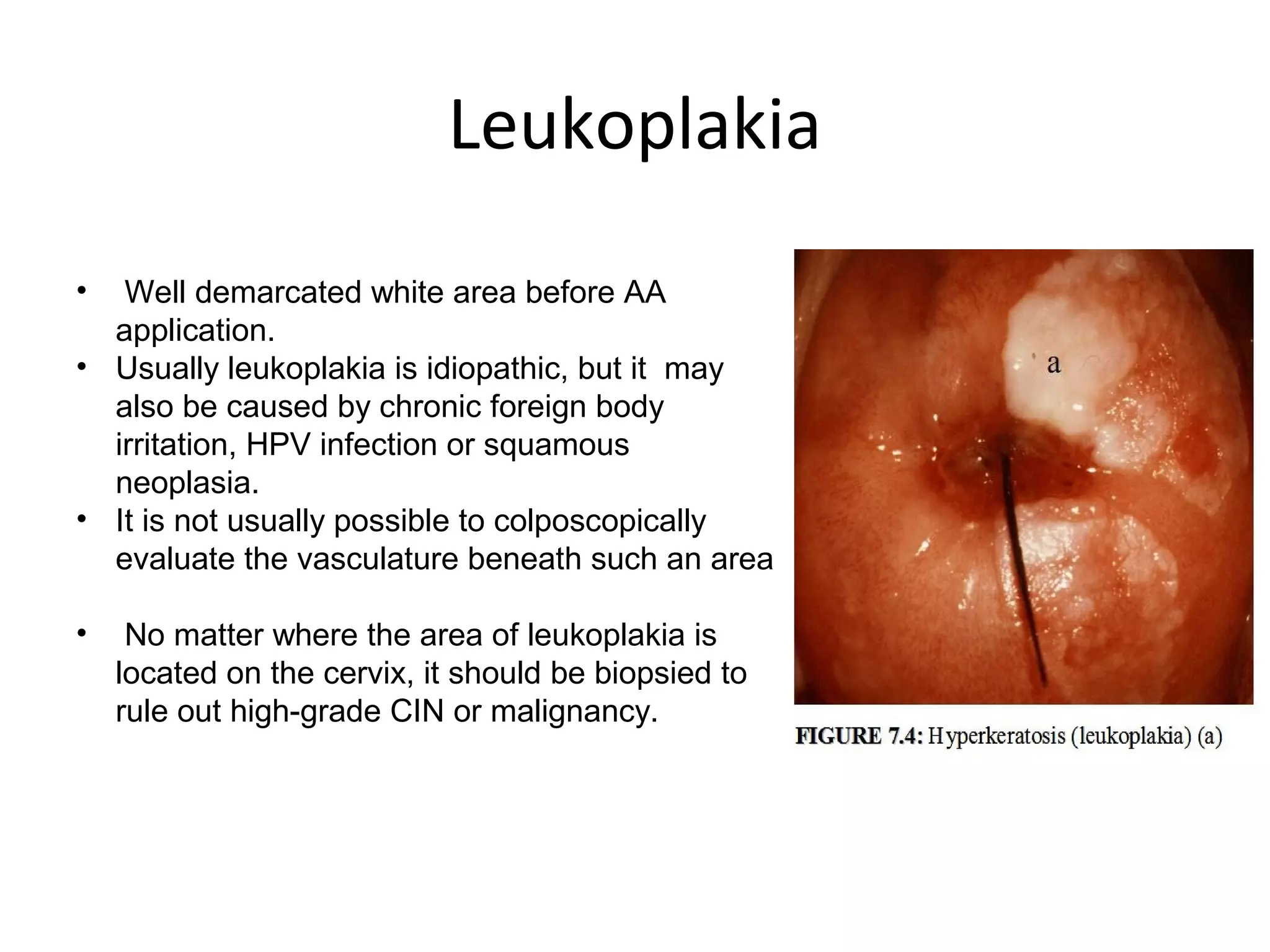Colposcopy involves examining the cervix, vagina, and vulva with a binocular microscope. It allows detection of pre-cancerous and cancerous epithelial changes through identification of vascular patterns and epithelial abnormalities that appear after applying acetic acid or Lugol's iodine. The transformation zone, where squamous and columnar epithelia meet, is the main area of interest as most cervical cancers originate there. A colposcopy examination is considered satisfactory only if the entire transformation zone is visualized.





























































































































